#sehsuvar sultan
Photo

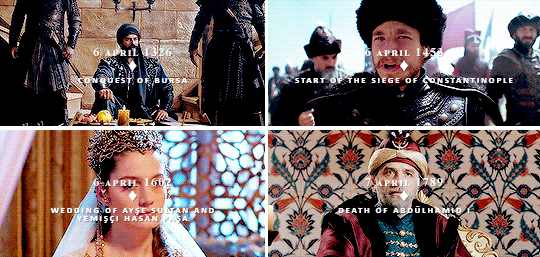

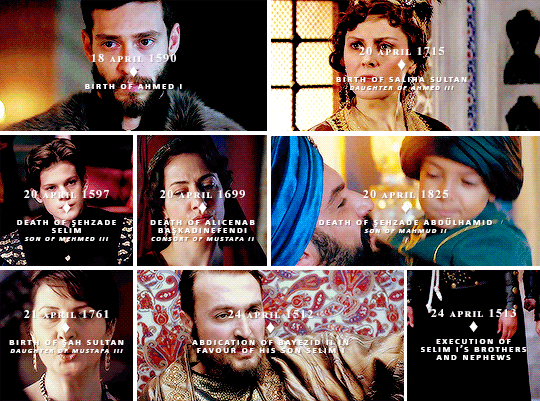
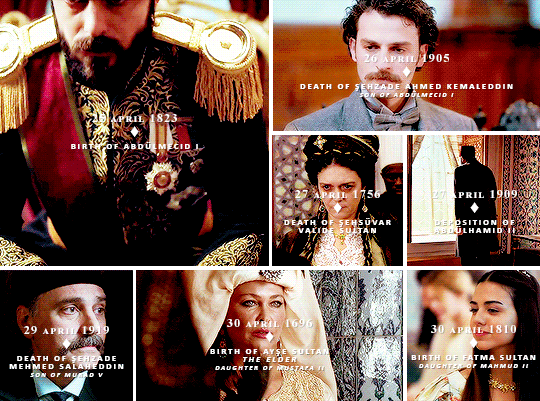
𝐈𝐧 𝐭𝐡𝐞 𝐦𝐨𝐧𝐭𝐡 𝐨𝐟 𝐀𝐩𝐫𝐢𝐥 𝐢𝐧 𝐎𝐭𝐭𝐨𝐦𝐚𝐧 𝐡𝐢𝐬𝐭𝐨𝐫𝐲
#history#historyedit#ottoman history#ayse sultan daughter of murad iii#haseki hurrem sultan#nazikeda kadin#emetullah sultan daughter of mustafa ii#saliha sultan daughter of ahmed iii#alicenab kadin#sah sultan daughter of mustafa iii#sehsuvar sultan#ayse sultan daughter of mustafa ii#fatma sultan daughter of mahmud ii#ottomanladiesedit#*everymonth#abdulhamid i#abdulhamid ii#murad iv#selim i#abdulmecid i
158 notes
·
View notes
Text
Text credits:
http://www.greatistanbul.com/nuruosmaniye_mosque.html
Nuruosmaniye Mosque in Istanbul
The construction of the Nuruosmaniye Mosque was started by Sultan Mahmud I in 1748 and completed by Sultan Osman III in 1755. It’s a typical Baroque and Rococo style mosque which was a very popular architecture of 1700’s within the Ottoman Empire. The mosque was built on one of the seven hills of Istanbul by a Greek minority architect named Simeon and Mustafa Aga.
The mosque has a semi-circular courtyard with no fountain for the ablutions but only taps today. There are two minarets each having two balconies. It has a single dome and no column within the prayer hall but raised on four large arches, having a diameter of 25 meters (82 feet) and the height of 43 meters (141 feet). There are many ornaments on its main walls, stone crescent on the minaret tops, stone work of the niche (Mihrab) and the pulpit (Minbar). On the east corner of the prayer hall there is the sultan’s lodge with latticework between its columns, accessed by a ramp outside the mosque. The existence of many windows provide lots of light but also justifying the name of the mosque: Nuruosmaniye means “The Light of Osman”. It also gave its name to the neighborhood.
The Nuruosmaniye Complex has a manuscript library as well with thousands of volumes containing also collections belonging to the sultans. This section is closed to the public except researchers with special permission. In the complex, there is also a medresse and a soup kitchen to the north, a mausoleum where Sultan Osman III’s mother (Sehsuvar Valide Sultan) is buried, and a public fountain.
The mosque is in Nuruosmaniye neighborhood near Eminonu, just next to the Grand Bazaar, to the northwest of the Cemberlitas column.
Español
Créditos de este texto:
https://planetaestambul.wordpress.com/2017/04/27/nuruosmaniye/
Publicado: abril 27, 2017
La Mezquita de Nuruosmaniye es uno de los templos más hermosos de Estambul, categoría alcanzada en gran parte por sus numerosas y logradas vidrieras que embellecen su interior a través de una soberbia y bien lograda luminosidad.
Nuruosmaniye, que en turco significa la luz de Osman, es uno de los templos islámicos más visibles y visitados del casco histórico de la ciudad, dado que goza de una ubicación única aledaña al Gran Bazar y a la Columna de Constantino.
Fue diseñada por los arquitectos Mustafa Ağa y Simon Kalfa e inaugurada en 1755 por el sultán Osman III, aunque la misma fue comisionada por Mahmut I en 1748, siendo considerada como una de las obras culmen del barroco otomano.
Nuruosmaniye sorprende por su aprovechamiento del espacio, de hecho ni siquiera cuenta con una tradicional fuente central para las abluciones, pero el templo exhibe porte y su cúpula se eleva hasta los 42 metros de altura, en una competición por alcanzar el cielo en la que se ve acompañado de 2 esplendidos alminares que suben hasta los 60 metros.oración, ya que Nuruosmaniye es uno de los epicentros de la Llamada al rezo, un lugar donde la polifonía coral de todo el entorno se concentra emocionando tanto a creyentes como ateos.
Además, Nuruosmaniye no solo constituye solo una mezquita, sino en el pasado configuraba un complejo más grande o Külliye, donde se ubicaba una madrasa, aulas y alojamientos para los alumnos, así como uno de las mejores bibliotecas de la ciudad que sigue existiendo en la actualidad y atesora documentos personales de los sultanes Mahmut I y Osman III.
En definitiva, la mezquita de Nuruosmaniye es una de las luces que hacen vibrar a los viajeros, un templo para soñadores, luz y arte para enamorarse para siempre de Estambul.
Nuruosmaniye Mosque, Istanbul….Mesquita Nuruosmaniye, Estambul Text credits: Nuruosmaniye Mosque in Istanbul The construction of the Nuruosmaniye Mosque was started by Sultan Mahmud I in 1748 and completed by Sultan Osman III in 1755.
#arquitectura otomana#Estambul#Istanbul#mezquita#Mezquita Nuruosmaniye#mosque#Nuruosmaniye Mosque#Ottoman architecture#Turkey#Turquía
0 notes
Photo


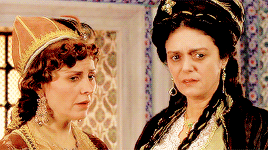

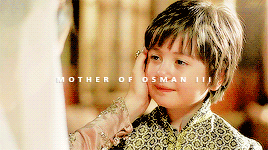


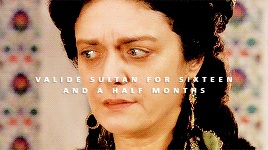
VALIDE SULTANS: "When Osman III (r. 1754-7) ascended the throne upon his brother Mahmud I's death, he was already aged 55 and his mother Şehsuvar Sultan (d. 1756) was thus established as queen mother for only for a brief duration. Like Saliha Sultan, and unlike Gülnuş Sultan, she did not have the opportunity to embark on building activities when she was the favourite of Mustafa II, and her short tenure as queen mother, only 16-and-a-half months, undoubtedly hindered any architectural patronage she might have planned. After her death in 1756, she was buried in the tomb next to Nuruosmaniye Mosque Complex, which was constructed by Mahmud I to be 'Mahmudiye Mosque', but completed and named after Osman III in 1755 upon Mahmud's death." -- Muzaffer Özgüleş, The Women Who Built the Ottoman World: Female Patronage and the Architectural Legacy of Gülnuş Sultan // Selda Özer as Şehsuvar
383 notes
·
View notes
Note
Hello,could you give me so info Şehsuvar Valide Sultân.
Hello!
Şehsuvar Valide Sultan was one of the consorts of Mustafa II and the mother of Osman III. Country of origin and date of birth are unknown. She gave birth to her only son Osman in 1699 and in 1702 she was still especially in favour, as it is recorded that Mustafa II had donated her a pair of bracelets decorated with rubies and diamonds.
Mustafa II was deposed in 1703 so Şehsuvar was sent to the Old Palace, whereas her son was locked up in the kafes-- he would stay there for 51 years. On 30 September 1715, during a feast, a fire broke out in the Old Palace and Şehsuvar's rooms were completely engulfed in the flames. She was, thus, moved to Sultan Murad's Baghdad kiosk for a time.
In December 1754 Osman III succeeded his brother Mahmud I and the most lavish procession of the valide sultan was organised for Şehsuvar, which started on 18 December 1754. Only on the sixth day of the celebration was the valide sultan transported to Topkapi Palace in great pomp.
Şehsuvar's tenure as valide sultan lasted only from 12 December 1754 to 27 April 1756, when she died of natural causes. She was buried in the courtyard of the Nuruosmaniye Mosque, built by her son Osman.
sources: Necdet Sakaoğlu - Bu Mülkün Kadın Sultanları
11 notes
·
View notes
Photo

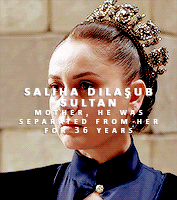
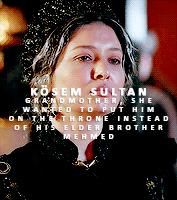



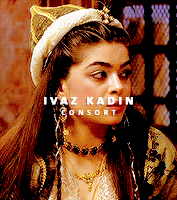


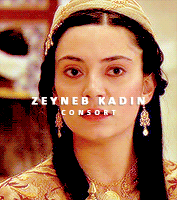
Süleyman II of the Ottomam Empire + the women in his life -- requested by anon
#history#historyedit#suleyman ii#saliha dilasub sultan#kosem sultan#turhan hatice sultan#hatice kadin#behzade kadin#ivaz kadin#sulun kadin#sehsuvar kadin#zeyneb kadin#ottomanladiesedit#*womeninlife
175 notes
·
View notes
Photo



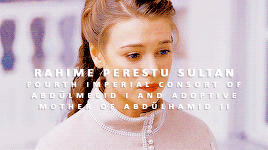
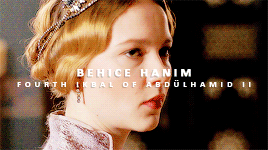

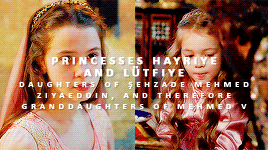

Known fair-haired women in Ottoman history -- requested by anon
#history#historyedit#ottoman history#haseki hurrem sultan#hosyar kadin#rahime perestu sultan#gulcemal kadin#musfika kadin#hayriye sultan granddaughter of mehmed v#lutfiye sultan granddaughter of mehmed v#sehsuvar kadin#behice hanim#ottomanladiesedit#*requested
1K notes
·
View notes
Note
Tell us please more Suleiman II and Ahmed II's consorts and children ? ( I heard that Suleiman was sterile but idk if that is true or not)
Süleyman II's consorts:
Hatice Kadın: according to Uluçay, Suleyman II's Senior Consort.
Behzad Kadın: she was given a diamond brooch which had belonged to Hatice Muazzez
Süğlün Kadın: she was given a pair of diamond earrings, a pair of pearl earrings and an 83-pearl pendant, which had belonged to Hatice Muazzez.
Şehsuvar Kadın: she was given an ablution bowl studded with pearls which had belonged to Hatice Muazzez
Zeyneb Kadın: consort of Süleyman II
İvaz Kadın: consort of Süleyman II
Süleyman II had no children. It is not known whether he was sterile or not, Davis says that he was not interested in sexual relations though he kept consorts. Anyways, he only reign for 4 years and spent the last 2 of which bedridden because his body had swollen up.
Ahmed II's Consorts:
Haseki Rabia Sultan: She was the most beloved concubine of Ahmed II and the last Haseki Sultan of the Ottoman Empire. Her nationality, family, and date of birth are unknown. She was the mother of twins Ibrahim and Selim (born on 7 October 1692) and of Asiye Sultan (born on 23 October 1694). Twins were very rare in the dynasty and Rabia’s were possibly the first to be born to a sultan. The following day, Ahmed II ordered four days and four nights of celebrations throughout Istanbul. Unfortunately Selim died on 25 May 1693. In 1695, after Ahmed II’s death, she was sent to the Old Palace with her daughter Asiye (who died in the same year). When Rabia died in 1712, she was buried next to Ahmed II and her children in Süleyman I’s mausoleum.
Şayeste Hatun/Hanım: according to Sicill-i Osmani, she was an ikbal, but Sakaoğlu corrected that with gözde. She died in 1710 and she could have been the mother of Ahmed II’s other daughters.
No other concubines are known.
Children:
Şehzade Ibrahim: (7.10.1692 - 4.5.1714) son of Haseki Rabia Sultan, he was a twin.
Şehzade Selim: (7.10.1692 - 25.5.1693) son of Haseki Rabia Sultan and twin brother of Şehzade Ibrahim
Asiye Sultan: (23.10.1694 - 9.12.1695) daughter of Haseki Rabia Sultan, she was 4 months old when her father died. She went to the Old Palace with her mother, where she died a year later. She was buried next to her father.
Atike Sultan: it is disputed whether she really existed or if Asiye and Atike Sultan are the same person. She was born on 24 October 1694 (prompting historians to think that maybe there had been a mistake in reporting Asiye Sultan’s birth). It is not known when she died.
Hatice Sultan: this princess is mentioned in Sicill-i Osmani and in The Structure of the Ottoman Dynasty but not in contemporary sources.
#anon#ask post#ask: ottoman history#suleyman ii#hatice kadin#behzad kadin#suglun kadin#sehsuvar kadin#zeyneb kadin#ivaz kadin#ahmed ii#haseki rabia sultan#sayeste hatun#asiye sultan daughter of ahmed ii#atike sultan daughter of ahmed ii#hatice sultan daughter of ahmed ii#*consortsandchildren
24 notes
·
View notes
Text
On this day, 27 April, in Ottoman history
27 April 1756 - death of Şehsuvar Valide Sultan; mother of Osman III, she had been Mustafa II’s Second Imperial Consort. She lived in the Old Palace for 51 years before finally returning to Topkapi Palace as Valide Sultan, when her son was enthroned as Osman III. Unfortunately, her tenure didn’t last long: from 12 December 1754 to 27 April 1756. She apparently died of natural causes and was buried in her mausoleum in the Nuruosmaniye Mosque.
27 April 1845 - engagement of Adile Sultan and Mehmed Ali Paşa; daughter of Mahmud II and his Fourth Imperial Consort Zemigar Kadın, her father chose Mehmed Ali Paşa, later Grand Vizier, as her husband. She is the only daughter of a sultan who composed a collection of poems. Adile Sultan and Mehmed Ali Paşa were married for 23 years, during which time they had 4 children: three died in infancy, while Hayriye Hanımsultan reached adulthood and married.
27 April 1849 - death of Sabiha Sultan; daughter of Abdülmecid and his Second Ikbal Mahitab Hanım, she was just one year old when she died. She was buried in the New Mosque.
27 April 1909 - deposition of Abdülhamid II and proclamation of Sultan Mehmed V Reşad; the countercoup of April 13th having failed, the sultan had been imprisoned in Yıldız Palace by the CUP. On April 27th, a delegation of deputies consisting of Aram Efendi, an Armenian, Karasu Efendi, a Jew from Thessalonica, and two Muslims, Arif Hikmet Paşa and Esad Paşa, arrived at the Palace to announce that “the people” had deposed the sultan and that his younger brother Mehmed Reşad was now sultan. Abdülhamid II asked to be allowed to retire to Çırağan Palace, but that same night he and his immediate family were taken to the railway station and exiled to Thessalonica, staying there until 1912, when the city fell to Greek troops. He was thus taken back to Istanbul and confined in Beylerbeyi Palace until his death.
#history#on this day in history#on this day in ottoman history#sehsuvar sultan#adile sultan daughter of mahmud ii#sabiha sultan daughter of abdulmecid#abdulhamid ii#mehmed v#late ottoman empire
9 notes
·
View notes
Text
On this day, 19 April, in Ottoman history
19 April 1727 - death of Emetullah Sultan; daughter of Mustafa II and Şehsuvar Kadın (later Valide Sultan), she was named in honour of her grandmother Emetullah Rabia Gülnüş Valide Sultan. Her father died when she was two, so she moved to the Old Palace with her mother Şehsuvar, where she stayed until she got married. Her uncle Ahmed III chose the governor of Mosul Sirke Osman Paşa for her, and they were married in 1720, during the circumcision fests of Ahmed III’s sons. Osman Paşa died in 1724, and Emetullah Sultan followed him just three years later, at 23 years old. Their only child was Hibetullah Hanımsultan, who died in 1744. Emetullah Sultan was buried in the New Mosque, inside the mausoleum of Turhan Hatice Sultan.
#history#on this day in history#on this day in ottoman history#emetullah sultan daughter of mustafa ii#sehsuvar sultan#emetullah rabia gulnus sultan#mustafa ii
17 notes
·
View notes